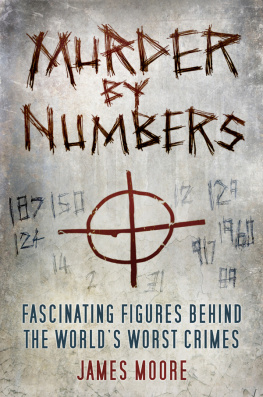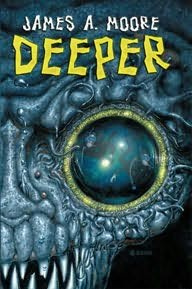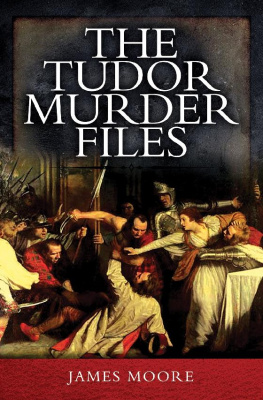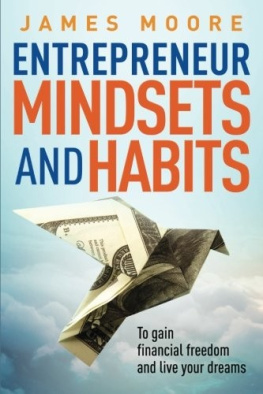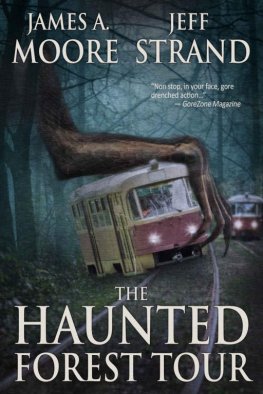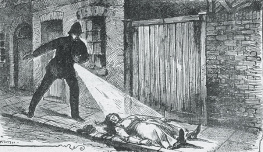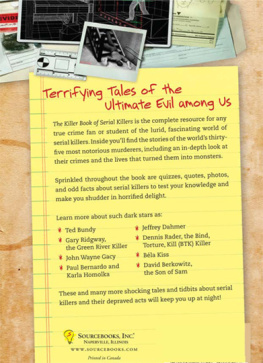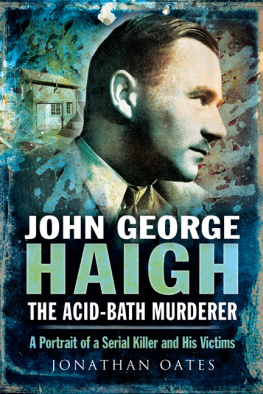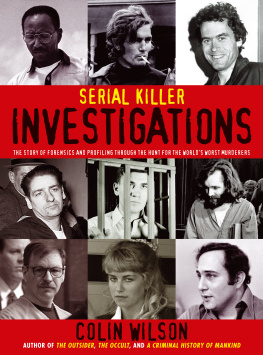Contents
Guide

First published 2018
The History Press
The Mill, Brimscombe Port
Stroud, Gloucestershire, GL5 2QG
www.thehistorypress.co.uk
James Moore, 2018
The right of James Moore to be identified as the Author of this work has been asserted in accordance with the Copyright, Designs and Patents Act 1988.
All rights reserved. No part of this book may be reprinted or reproduced or utilised in any form or by any electronic, mechanical or other means, now known or hereafter invented, including photocopying and recording, or in any information storage or retrieval system, without the permission in writing from the Publishers.
British Library Cataloguing in Publication Data.
A catalogue record for this book is available from the British Library.
ISBN 978 0 7509 8707 3
Typesetting and origination by The History Press
eBook converted by Geethik Technologies
CONTENTS
ACKNOWLEDGEMENTS
Numerous people gave their help and support to make this book possible, but Id particularly like to thank Tamsin Moore, Laurie Moore, Alex Moore, Philippa Moore, Geoffrey Moore, Sam Moore, Dr Lana Matile Moore, Dr Tom Moore, Dr Claire Nesbitt, Jan Hebditch, Daniel Simister, Sarah Sarkhel, Jim Addison, Samm Taylor, Judi James, Peter Spurgeon, Fran Bowden, Martin Phillips, Robert Smith and Mark Beynon.
James Moore
Gloucestershire, 2017
INTRODUCTION
Sherlock Holmes was obsessed by numbers. It is a simple calculation enough, he said, while explaining one of his conclusions in A Study in Scarlet, the first of Arthur Conan Doyles works to feature the great fictional detective. In the story, Holmes works out the height of a man from measuring the length of his stride and the writing on a wall, while estimating his age from the size of a puddle over which he has jumped. Numbers run through his adventures from the mysterious five orange pips to the bizarre smashing of the six busts of Napoleon. Even the number of the address at which Holmes lived, 221B Baker Street, has become world famous. His most notorious foe, Moriarty, was a master mathematician.
Agatha Christie, who gave us Miss Marple and Hercule Poirot, loved numbers too. Her most acclaimed novel, And Then There Were None, revolves around the number ten in a tale that chillingly parallels the fate of those in the nursery rhyme Ten Little Indians. In 2015 a group of scientists even collected data on methods, motives and locations from twenty-six of Christies works and were able to come up with a formula enabling readers to identify who the culprit is before the author herself reveals the killer. Among the fascinating findings was that if the setting was a country house there was a 75 per cent chance the murderer would be female.
Numbers also provide the key to real-life crimes, especially murders. This book examines in thrilling, and often graphic, detail how numbers provide the backdrop to some of the most fascinating cases from history.
Motives for murder may often involve sex or revenge, but money is often at the root of homicide, and whether the numbers involved are small or large, they can be both shocking and revealing often giving police vital leads too.
From the moment a murder is committed, numbers are at the heart of any investigation. In forensics, medical examiners aim to identify the time of death, looking at factors such as body temperature and rigor mortis. They determine the number of wounds on a victim and perhaps their length and depth, as well as taking the physical measurements of the corpse and estimating the persons age. All these are recorded in digits.
In murders involving firearms, ballistics experts may seek to identify the calibre of a weapon used or calculate the angle of trajectory at which a bullet struck its victim. They use mathematical formulas to calculate the twist of the barrel and might even weigh ammunition, looking for vital information.
Toxicology tests can reveal how much poison is in a body, while measuring hairs or fibres found at a murder scene can be highly revealing, as can figures relating to the distribution of blood. Even shoe size or, for that matter, the age of pollen on an item of footwear, can reveal an important number. So can the length of time insects have been at work on a body. DNA evidence can provide startling statistics when it comes to determining whether an individual should be ruled in or out of an enquiry.
Detectives also pore over numbers as they try and crack cases, studying the measurements taken at a crime scene, for instance, to get a picture of what happened. Theyll log timings of a victims or suspects movements too. They may seek to discover the number of victims linked to a single killer or note the typical height or age of victims when analysing a murderers modus operandi. Knowing the murderers own age and build could be equally crucial to tracking them down.
Numbers found on cars, weapons, clothes, tickets or phones can often provide the important breakthroughs in investigations. Then there are the numbers that reveal the scale of police enquiries interviews conducted, calls logged, fingerprint records checked and so on.
The influence of numbers does not end when the investigation is wrapped up. Numbers continue to be vital when it comes to proving a case in court, with juries asked, for example, to weigh up probabilities expressed in numbers as they make their deliberations about whether the accused is guilty. Even where someone has been condemned to death, their executioners may have had to make careful calculations to ensure a swift and humane death.
Sometimes, the startling figures in murder stories relate to how long it has taken for a body to come to light or the length of time it has taken to find the culprit. Often, despite the best efforts of investigators, cases continue to go unsolved, leaving behind only the stark and intriguing numbers involved.
Certain murderers have even been obsessed with particular numbers, while other cases are bound up with mysterious numerological associations. Occasionally, numbers reveal disturbing and puzzling coincidences between crimes.
Murder by Numbers looks at some of the fascinating statistics behind the phenomenon of murder, including its incidence as well as the nature of killers and their victims. It has been estimated that the number of people who have ever lived is around 108 billion. No one knows exactly how many of those have been murdered, but according to the World Health Organisation, in modern times a person is murdered every sixty seconds. This book covers hundreds of specific murders from across the centuries a selection that affirms Sherlock Holmes sage observation that when it comes to crime, There is nothing new under the sun, it has all been done before.
According to the Bible, the worlds first murderer was Cain, the son of Adam and Eve, who slew his own brother Abel in cold blood:
Now Cain said to his brother Abel, Lets go out to the field. While they were in the field, Cain attacked his brother Abel and killed him.
Genesis 4:8
The story goes that Cain, a farmer, and Abel, a shepherd, both made sacrifices to God, but that the Almighty favoured Abels. A furious Cain then murdered his brother.

